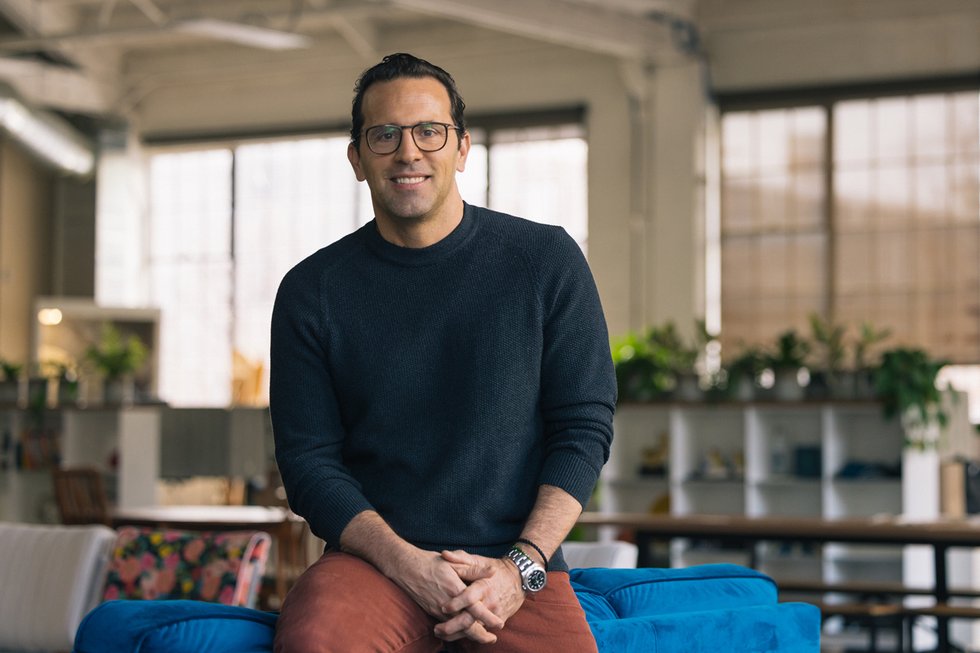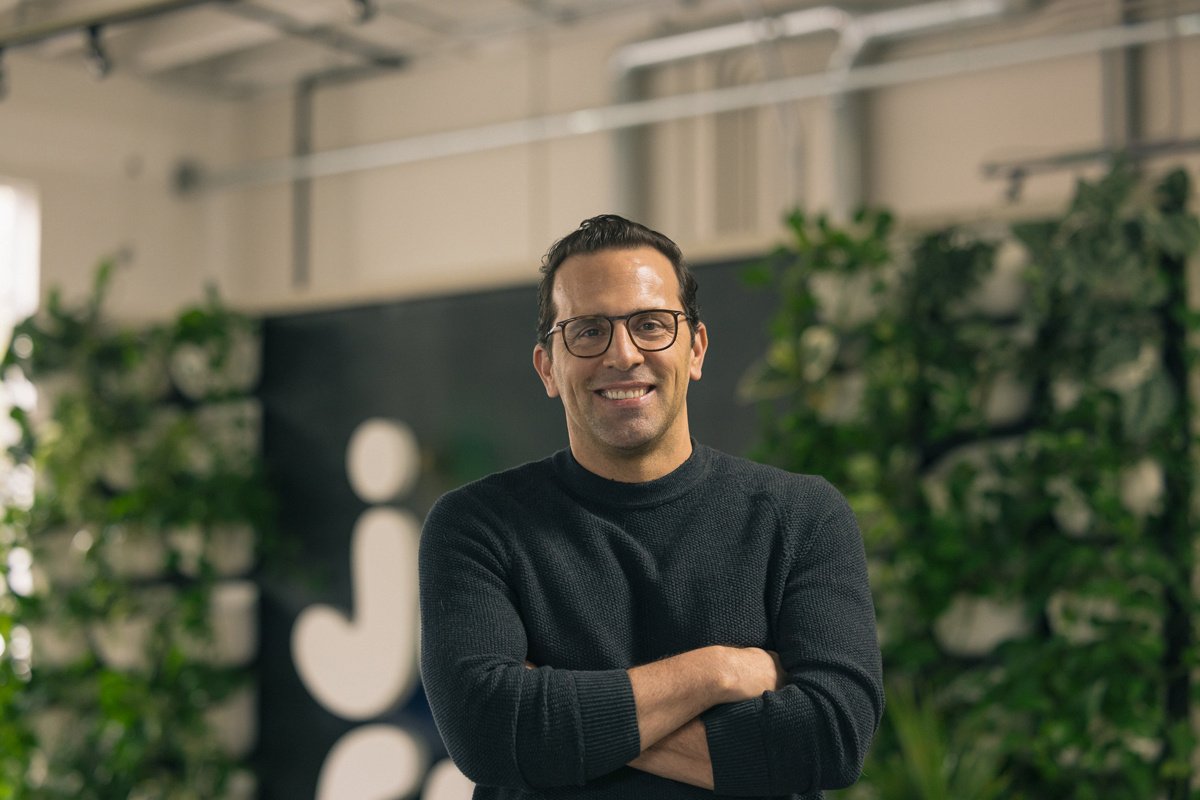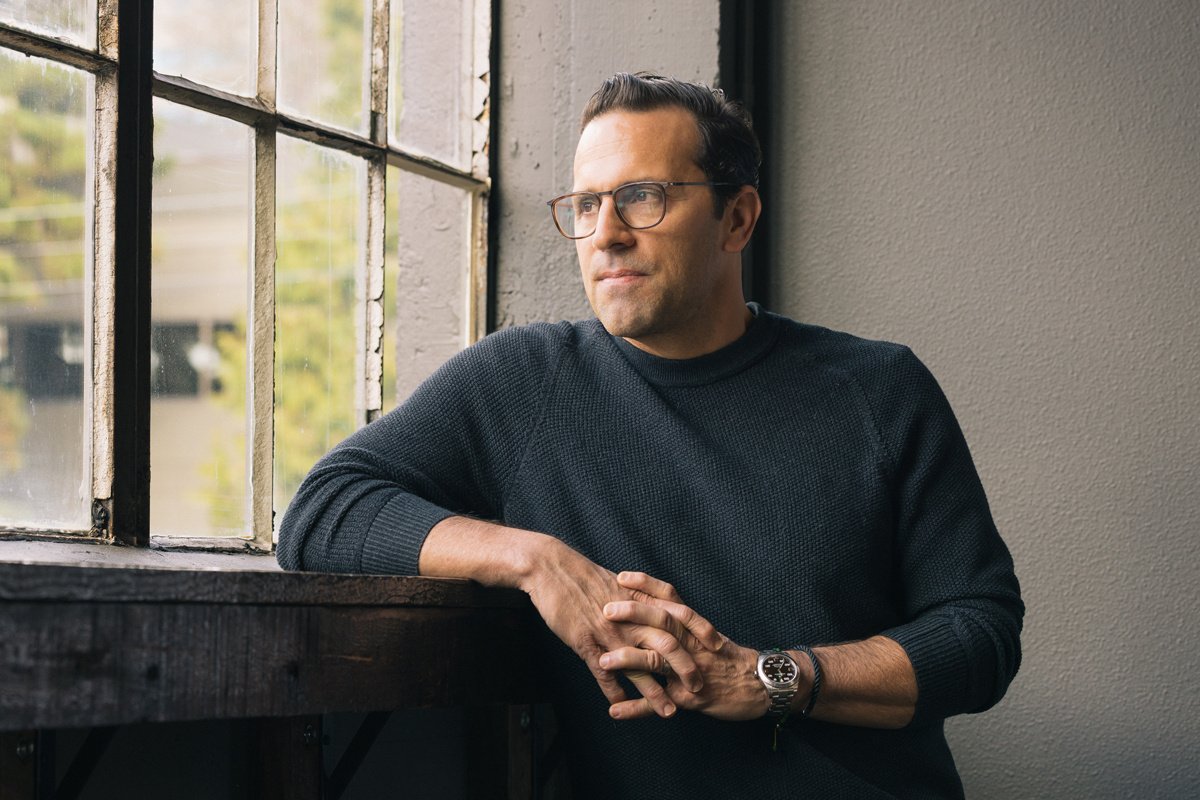Why the secret to career fulfillment lies in finding the right fit
06. 2. 2024
8 min.


US Editor at Welcome to the Jungle
Is there such a thing as the perfect job? Or is it more about finding the perfect fit? As the work landscape has been altered fundamentally by such factors as the pandemic, technological advancements, and evolving societal values, the quest for fulfilling work has become more important than ever. This shift has brought the concept of ‘fit’ in the workplace into sharp focus, emphasizing not just the role itself but how it aligns with an individual’s unique values, preferences, and the culture of their organization.
To explore this critical issue, Welcome to the Jungle spoke with André Martin, an organizational psychologist and author of Wrong Fit, Right Fit: Why How We Work Matters More Than Ever. With over two decades of experience as chief talent officer for brands such as Mars, Nike, Google, and Target, he now serves as a culture strategist in residence at Joyful.co, an employee engagement creative agency. By sharing his expertise, Martin sheds light on how we can achieve harmony and fulfillment in our professional lives, helping us thrive as we navigate today’s dynamic work environment.
What is your definition of fit, and how have you seen it transform over time?
Fit, in my view, is all about [having] a deep and authentic connection to how a company operates on a daily basis. It’s how we do work every day that defines our experience. Having worked with some of the biggest brands in the world, I’ve seen that no two companies are the same. Nike’s way of working differs vastly from Google’s, which is again different from how Mars or Target operates. We often overlook the day-to-day things: how ideas are socialized; how feedback is given; the approach to setting strategies; and even how team meetings are conducted. These elements define our work experience and impact our long-term engagement and commitment more than broader aspects like company values, products, or the brand itself.
How has fit changed, especially since the pandemic?
Covid wasn’t the cause but [was] a great accelerator for changes that were already underlying. A critical thing for me is the recognition that there is a huge amount of disengagement in the workplace. Gallup cites $8.8 trillion in lost productivity due to this disengagement. Engagement levels haven’t really shifted in over a decade. But post-Covid, there’s been a shift in employee perspective. People are looking for jobs that truly matter to them. They’re seeking a sense of meaning in their work. The concept of work has shifted from being a life-consuming endeavor to something that should leave us feeling fulfilled rather than exhausted. Another significant change around fit is how we perceive it, thanks to social media. We can now see hundreds of people who seem to have better lives, affecting our commitment to our current roles. This comparison can make us believe there’s better out there, which is a big factor in the current job-hopping trend.
Are folks just hopping from one job to another, trying to find that sweet spot they see others flaunting online?
Absolutely. We saw much of this in 2021 with the rise of the Great Resignation. People were on the move, looking for more meaningful work, better workplace environments, and better leaders. Now what we’re seeing is people realizing that they might not fit into their current roles, leading to trends like ‘quiet quitting’ where they stay at their jobs but aren’t fully engaged. It’s an indication of people trying to find where they fit best. But what’s often overlooked is the unspoken cost of job-hopping. You’re essentially starting from scratch each time: your network, your reputational capital, your understanding of a new work culture. Every job change redirects your creative energy from your craft to adjusting to a new environment.
“It’s about knowing what your ideal company looks like regarding its day-to-day operations and what you’re solving for right now.”
But why is finding the right fit so critical?
Some startling statistics underscore the importance of finding the right fit. For instance, 30% of job seekers have left a job within the first 90 days. Then there’s the issue of the ‘Sunday Scaries’ and workplace isolation. These factors contribute to a lack of fulfillment and high stress, which are detrimental in the long run. When I interviewed over 110 people for my book, those who had found the right fit described their work experience as comfortable and fulfilling. They could focus more on their craft rather than worrying about external factors such as clothing or where they were headed. They felt more like themselves, which is a significant aspect of job satisfaction. It’s about how you feel daily when you walk into work or log in from home. Job satisfaction doesn’t boil down to pay or brand—it’s about how your work aligns with your life and values.
What alignment should individuals look for in a job?
In my book, I discuss eight ‘excursions’ for self-reflection, which are essential for assessing fit. [The ‘excursions’ are a set of exercises digging into areas such as your motivation, goals, and values.] These cover a range of questions, from the values that guide your big decisions, the life you want in the next five to 10 years, your strengths, what causes you stress, the career you’re building, and the type of leader you work best with. Understanding these factors is crucial in assessing whether a job is right for you. It’s about knowing what your ideal company looks like regarding its day-to-day operations and what you’re solving for right now. Sometimes, a job is just a job, but it’s important to know what you want from it and what you can offer in return.
So how should someone assess their current job for fit if they’re uncertain?
It involves constant self-reflection. It’s about revisiting those questions you considered when initially taking the job. But it’s also about being aware of what I call ‘buffers’ in the workplace—these elements help ensure you maintain a good fit in your job. This could include connecting to the purpose of your work, ensuring that what you’re doing is both meaningful and has a high impact. It’s about connecting with the consumers you serve. Sometimes, you might be in a job that isn’t directly customer-facing, but the more you can hear and reflect on those consumer stories, the more you realize the significance of your work.
These ‘buffers’ are what can help you stay aligned with your job and prevent you from falling into a mismatched situation. Additionally, on the relational side, having a supportive leader or manager, meaningful mentors, and workplace friends can make a big difference. An interesting buffer I’ve come across is the concept of a ‘workplace doppelgänger.’ This is someone in your company who works like you, has similar experiences, and maybe a similar role but is happy and succeeding while you’re not. It’s a signal that there could be a place in your company where you can find the right fit, but perhaps your current team, role, or leader isn’t the best match for you.
What strategies should employees use to find the right fit?
The best thing anyone can do is to start interviewing broadly. Cast a wide net among companies that seem to value what you value and have openings in areas you’re interested in. But there’s a caveat. Through my research and interviews, I found that many people who ended up in wrong-fit situations knew it during the interview process but ignored the signs. They got caught up in the allure of a prestigious brand, a better title, or a bigger paycheck. When applying for jobs, realize that you’re part of a massive marketing machine. Companies often present their best selves, just like on a first date. So, when you can ask questions during an interview, make them count. Don’t settle for generic questions. Ask specific ones that give you a real sense of how the company operates. For example, ask the interviewer to walk you through their typical day or to describe a recent hire who’s been highly successful. This can give you a clearer picture of what’s expected and how you might fit in. Another strategy I recommend is triangulating every piece of information you hear. If a manager says it’s a great place to work, go and validate that claim. Reach out to former employees on LinkedIn, especially those who were there for a substantial period and have recently left. They can give you an honest view of what working there is really like.
“If a job doesn’t feel right, it’s okay to leave and find something that’s a better match.”
For new graduates or those jumping back into the workforce, finding the right fit can be tricky, especially if they’re not sure what it looks like. What advice would you give them?
For new graduates, the focus should be on identifying what you’re good at and finding a job that allows you to use those skills. Think broadly. If you’re good at solving complex problems, there are many roles you can fit into. Or find a city you want to live in and look for jobs there. For those reentering the workforce, use your first 90 days in a new job not just to assimilate but to assess whether it’s the right fit for you. If a job doesn’t feel right, it’s okay to leave and find something that’s a better match. Remember, you’re not just there to fit into the company; the job should also fit you. And for both new graduates and those reentering, remember that it’s okay to test drive a job. If it doesn’t fit, you can and should look for something better. Don’t feel you must stick with a job just because you accepted it.
One practical tip, especially for those early in their career, is to use platforms like LinkedIn to find people who are 10 years ahead in their careers and whose lives you might want to have. This can give you a roadmap for your own career. Also, be authentic in interviews. Tell people what you need from your day-to-day work and how you like to operate. There’s no point hiding who you are because the truth will come out once you’re in the role. For companies, I advise the same. Why mislead a candidate about the culture or day-to-day work? If they join and find it’s not what they expected, their engagement plummets from day one. For both parties, it’s about being honest and upfront about what you’re looking for and what you can offer.
In light of the gig economy and remote work trends, how do you see fit evolving?
One of the interesting trends we’re seeing is the rise of the side hustle. This comes partly from necessity—our full-time jobs aren’t always fulfilling or paying enough—and partly from a desire to pursue passions. As leaders, we should ask ourselves why these side hustles exist outside the company. Why not bring them in? If we allow people to work on their passions within the company, it can enhance their engagement with all aspects of their work. For example, at Google, we had a platform where employees could create and teach courses on any topic, from professional skills to personal passions. This integration of personal interests into the work environment boosted engagement significantly. Looking towards the future, I think the gig economy and trends like remote work will continue to grow, but companies can adapt by allowing more freedom and creativity within the workplace.
Any final thoughts or advice for individuals trying to find the right fit?
My final piece of advice is to be authentic and self-aware always. Understand what you’re good at and what you need from a job, and don’t be afraid to ask for it. The job market is evolving, and there’s no longer a one-size-fits-all approach to careers. Be prepared to adapt, reassess and, if necessary, move on to find what truly fits you. Remember, it’s not just about finding a job. It’s about finding a place to thrive, grow, and be your best self.
Photos: Kevin Hasenkopf for Welcome to the Jungle
Follow Welcome to the Jungle on Facebook, LinkedIn, and Instagram, and subscribe to our newsletter to get our latest articles every week!

Viac inšpirácie: Inšpirácie a tipy

From hobby to side hustle: 10 steps to turn your passion into a career in 2025
Have you been waiting for the right moment to turn what you love into a paid gig? 2025 is your time!
18. 12. 2024

Patience, balance, and multitasking: How parenthood shaped my career
Parenthood changes everything—including your career. These working parents share exactly how.
11. 12. 2024

The traits of a great boss (and how they make your work life better)
What makes a great boss? Effective leaders do more than manage tasks—they create a workplace where people feel supported, encouraged, and inspired.
13. 11. 2024

Leading without limits: How to shine as a leader, title or no title
Lab expert Ginny Clarke explores how being a leader isn't just reserved for execs ...
09. 4. 2024

How our burnt-out society can finally get some rest
Alex Soojung-Kim Pang unveils transformative strategies for slowing down our fast-paced lives.
19. 3. 2024
Novinky, ktoré to vyriešia
Chcete držať krok s najnovšími článkami? Dvakrát týždenne môžete do svojej poštovej schránky dostávať zaujímavé príbehy, ponuky na práce a ďalšie tipy.

Hľadáte svoju ďalšiu pracovnú príležitosť?
Viac ako 200 000 kandidátov našlo prácu s Welcome to the Jungle
Preskúmať pracovné miesta


